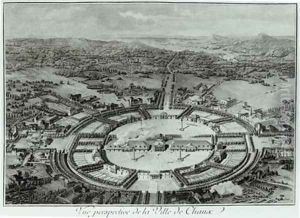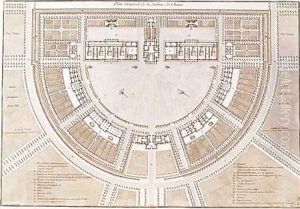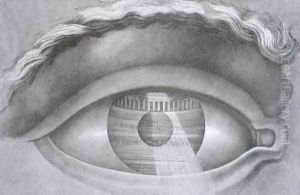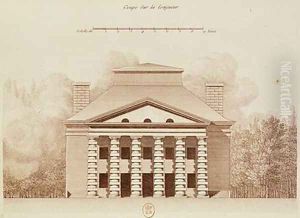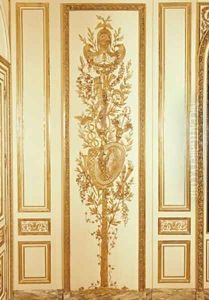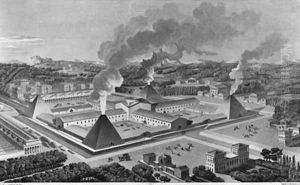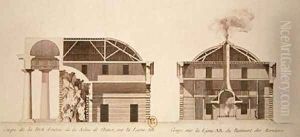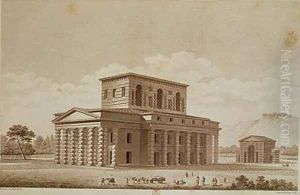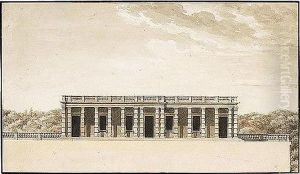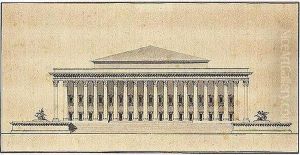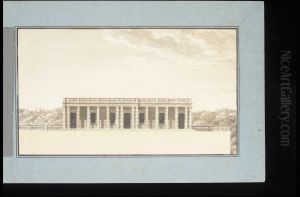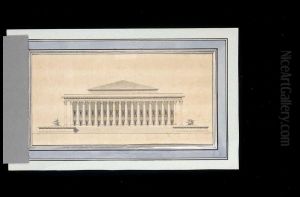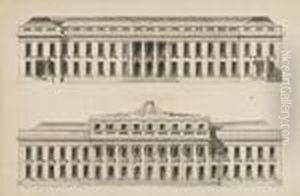Claude Nicolas Ledoux Paintings
Claude Nicolas Ledoux was a prolific French architect and city planner, whose visionary ideas and revolutionary designs made him one of the most influential figures of 18th-century French architecture. Born on March 21, 1736, in Dormans, France, Ledoux began his career as an engraver but quickly turned to architecture. He trained under Jacques-François Blondel, a renowned French architect, and gained recognition for his innovative and sometimes radical architectural ideas.
Ledoux's work is characterized by its neoclassical style, but he went beyond the traditional boundaries of the style, incorporating elements that emphasized bold simplicity and geometric clarity. His designs often featured grandiose and monumental structures, characterized by their pure forms and the dramatic use of columns and arches. Despite his visionary ideas, many of his more ambitious projects were never realized due to their utopian nature and the onset of the French Revolution.
One of Ledoux's most famous works is the Royal Saltworks at Arc-et-Senans, designed in 1775. This semicircular complex was intended to be both a factory and a model city. The Royal Saltworks is considered one of the earliest examples of industrial architecture and reflects Ledoux's interest in creating environments that were both functional and aesthetically pleasing.
In addition to his architectural projects, Ledoux also embarked on an ambitious urban planning venture, the city of Chaux. Although never fully realized, his plans for Chaux were groundbreaking. They included innovative ideas for social reform, including housing for workers that was both humane and functional, suggesting a radical rethinking of urban space to better serve societal needs.
Ledoux's later years were marked by the French Revolution, during which he was imprisoned for a time. After his release, he continued to work, although his projects were fewer and of a smaller scale. He devoted much of his time to compiling his theoretical works and designs into a publication titled 'L'Architecture considérée sous le rapport de l'art, des moeurs et de la législation' (Architecture considered in relation to art, morals, and legislation), which was published posthumously.
Claude Nicolas Ledoux died in obscurity on November 18, 1806. Despite the initial lack of recognition for his work and ideas, Ledoux's contributions to architecture and urban planning have been reevaluated over time. Today, he is celebrated as a visionary architect whose ideas presaged modern architectural movements and concepts of urban planning.
